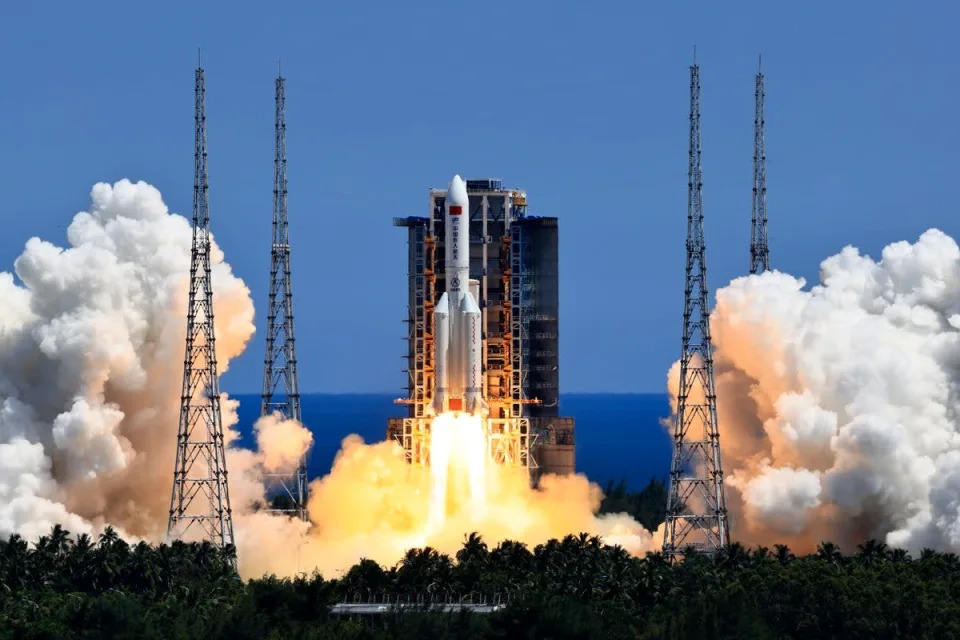Pieces of a rocket that carried part of the Chinese space station into space fell into the sea near the Philippines on Sunday, the Chinese government announced.
Most of the Long March-5B rocket was consumed as it entered the atmosphere at 12:55 am, the Chinese Space Agency said. The agency had previously said it would let the booster free fall to the ground.
The announcement did not give details on whether the pieces fell on land or sea but stated that “the landing zone” was 119 degrees east longitude and 9.1 degrees north latitude. That is in waters southeast of the Philippine city of Puerto Princesa, on the island of Palawan.
Philippine authorities have not yet said if anyone on the ground was affected.
China has been criticized before for letting parts of its rockets fall to the ground uncontrollably. NASA accused Beijing last year of “failing to meet responsible standards for its spacecraft wreckage” after pieces of a rocket fell into the Indian Ocean.
China’s first space station, Tiangong-1, fell into the Pacific Ocean in 2016 and Beijing confirmed that it lost control. An 18-tonne rocket fell out of control in May 2020.
China was also criticized for using a missile to destroy one of its weather satellites in 2007, creating a cloud of debris that other governments say could harm other satellites.
On July 24, China launched the Long March-5B rocket, its most powerful rocket to date, carrying the Wentian laboratory into orbit. On Monday the lab was attached to the Tianhe module, where three astronauts live.
The remains of another cargo ship that carried material to the space station fell into an area of the Pacific after most of it disintegrated on its re-entry into the atmosphere, the government announced earlier.

